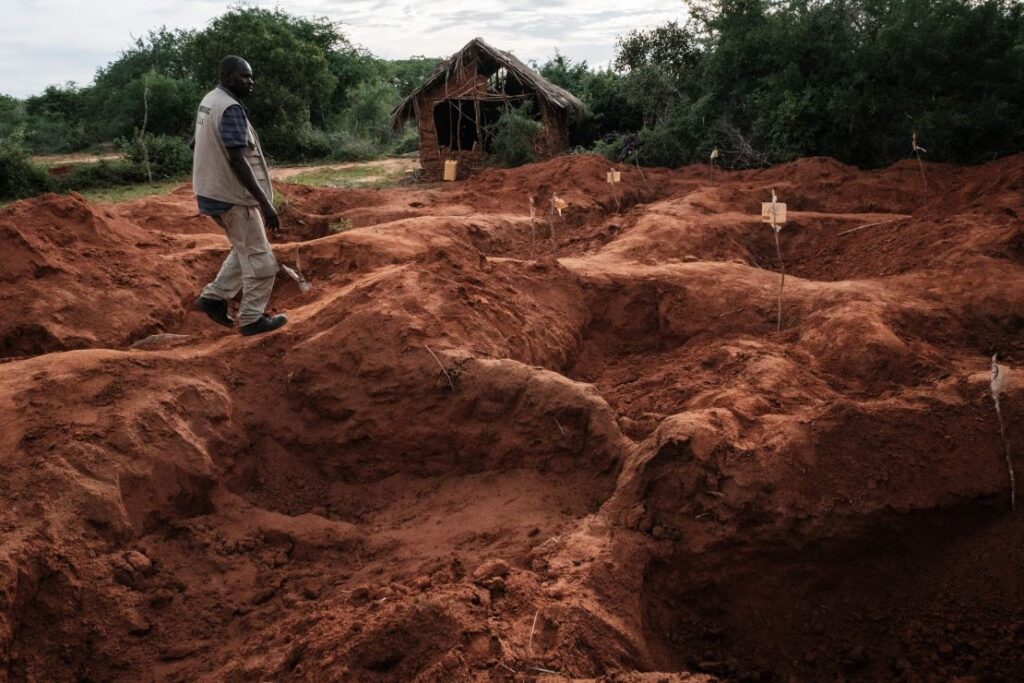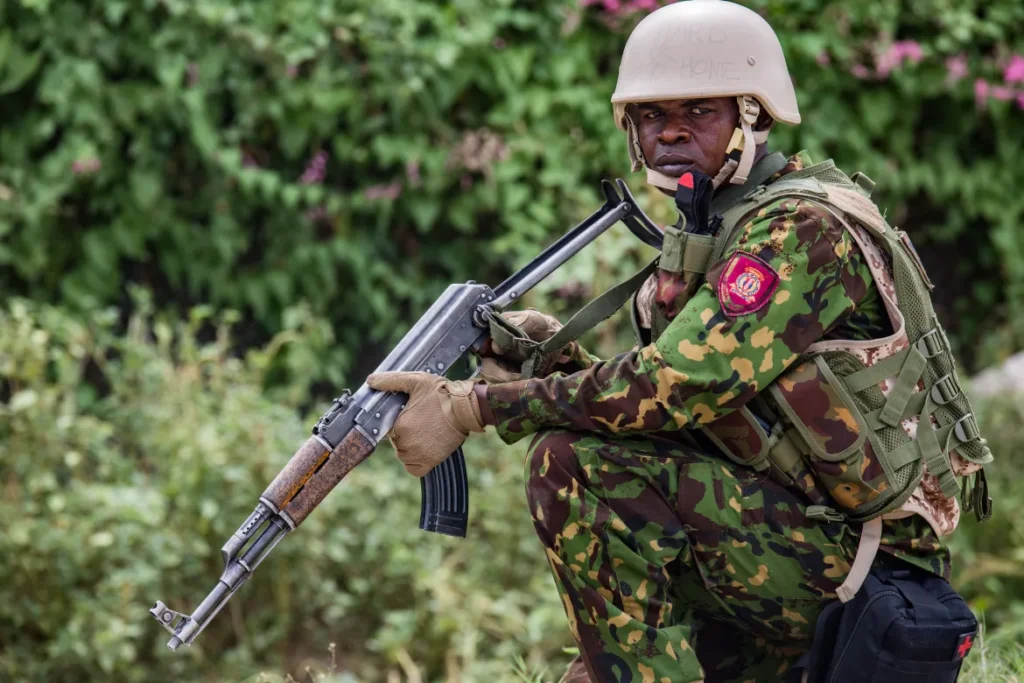
Forensic investigators in Kenya unearthed five bodies from suspected mass graves in Kilifi County on Thursday, stirring grim memories of Shakahola. Kenya’s Homicide Director Martin Nyuguto confirmed the discovery in Kwa Binzaro village, adding the victims’ identities remain unknown as investigations intensify. Government Pathologist Richard Njoroge said the operation was far from over, noting “five bodies out of six exhumed graves” were just the beginning.
He revealed investigators found scattered human remains across the surface, painting a haunting picture of a land soaked in unresolved tragedy. “We had 27 suspected graves at the commencement,” Njoroge explained, confirming six had been opened, five bodies recovered, and 10 body parts collected.
With 21 graves yet untouched, authorities warned the grim tally could rise further, urging patience as forensic teams sift through chilling evidence. Officials appealed to relatives with missing loved ones to provide DNA samples at the Red Cross desk in Malindi District Hospital.
Kilifi lies 426 kilometres southeast of Nairobi, a region once again thrust into the national spotlight for reasons steeped in sorrow. The exhumations echo the Shakahola Forest massacre of 2023, where more than 400 bodies were uncovered, many belonging to children.
That tragedy was tied to the Good News International Church, led by Pastor Paul Nthenge Mackenzie, accused of orchestrating starvation deaths. Investigators revealed followers suffered starvation, suffocation, strangulation, and blunt-force injuries, persuaded that dying in fasting would usher them closer to heaven.
The shadow of Shakahola lingers heavily, and Kwa Binzaro’s fresh graves hint that Kenya’s nightmare of faith-driven death is far from buried. Each shovelful of earth now uncovers more than remains—it exhumes a nation’s grief, reopening wounds that demand justice, closure, and accountability.




